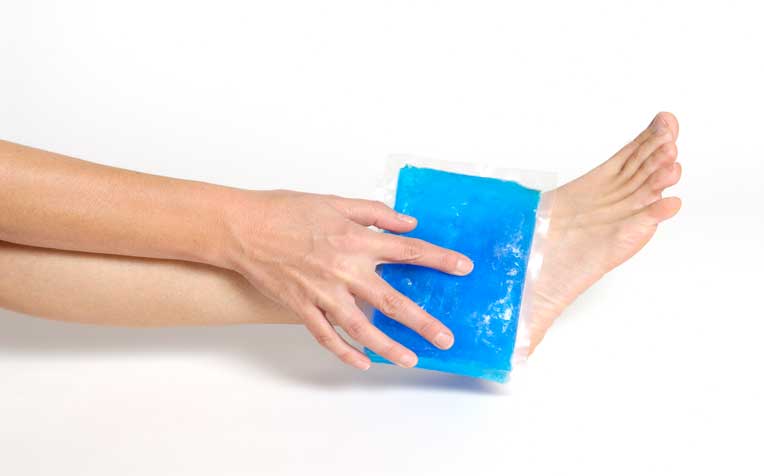HealthXchange will NEVER ask you to transfer money over a call. If in doubt, call the 24/7 ScamShield helpline at 1799, or visit the ScamShield website at www.scamshield.gov.sg.

Icing your ankle is an important second step of the RICE method, the most effective way to treat ankle sprains.
Ho Jiaying, Senior Physiotherapist from the Department of Physiotherapy at Singapore General Hospital (SGH), a member of the SingHealth group, shares the best way to treat ankle sprains.
An ankle sprain is a very common injury. It does not just happen in athletes. Most people will sprain their ankle at some point in their lives.
The ankle consists of many structures similar to elastic bands that help to hold the ankle bones together. These structures, known as ligaments, provide stability to the ankle. When an ankle is twisted into an awkward position, these ligaments get overstretched and may even tear under excessive force.
The most common type of ankle sprain is when the foot rolls inward and overstretch the outer ankle ligaments. An ankle sprain leads to swelling, redness, bruising and pain at the sprain site. In severe cases, some even hear a popping sound or feel a tear in their ankle.
What is the best way to treat an ankle sprain?
The RICE method should be carried out immediately to aid in the rapid healing of a sprained ankle:
- Rest your ankle. Do not put too much weight on it. Do use a crutch when necessary to reduce the load on your ankle when walking.
- Icing your ankle is very important, especially during the first 48 to 72 hours. Every 2 hours, apply an ice pack for about 20 minutes onto the swollen and painful area. Always place a cloth between the ice pack and your skin to protect yourself from frostbite. The ice pack will help with the pain, swelling and bruising.
- Compression of your ankle with an elastic bandage will help reduce the swelling. Do keep the bandage on until the ankle swelling subsides. Make sure that the bandage is not too tight, cutting off your blood circulation.
- Elevation of your ankle above the heart level will help with a swollen ankle.
When the ankle swelling has subsided for the most part, it is normal for your ankle to feel stiff. You can start with some simple gentle exercises (which shouldn’t cause pain) to regain ankle flexibility. A typical exercise could be moving your ankle to write the alphabet with your toes. Remember not to overstretch your ankle as it may result in further injury.
Ref: R14
Check out our other articles on foot conditions:
Why Is It Important to Treat Ankle Sprains Promptly?
Ankle Arthritis: What Causes It and Tips To Minimise Risk
Heel Pain: Causes and Home Remedies
Contributed by
Related Articles
Conditions & Treatments
Public Events
Get the Health Buddy App
© 2025 SingHealth Group. All Rights Reserved.
















 Get it on Google Play
Get it on Google Play